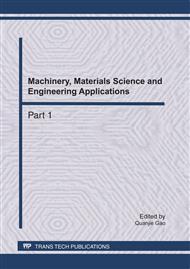p.332
p.340
p.345
p.351
p.356
p.363
p.368
p.374
p.379
A Quantitative Analysis of the Residual Stress and Grain Size Gradient Effects on the Energy Release Rate of a Coating-Substrate System
Abstract:
The surface heat treatment can lead to the residual stress and inhomogenous effects in coating-substrate system. Based on the well-known Hall-Petch relationship between the coating yield strength and its grain size, the inhomogenous effect can be extended to the grain size gradient effect. In this work, a mechanical model of a coating-substrate specimen is developed to quantify the residual stress and grain size gradient effects on the energy release rate of the coating on its substrate. Using a Micro-Composite-Double-Cantilever Beam Model (MCDCBM), the analytic solutions can be derived, and they can be used to characterize the fracture toughness of the inhomogenous coatings on substrates in terms of the critical energy release rate. Finally, a numerical example is presented to show how the critical energy release rate is obtained.
Info:
Periodical:
Pages:
356-362
Citation:
Online since:
April 2011
Authors:
Price:
Сopyright:
© 2011 Trans Tech Publications Ltd. All Rights Reserved
Share:
Citation:


